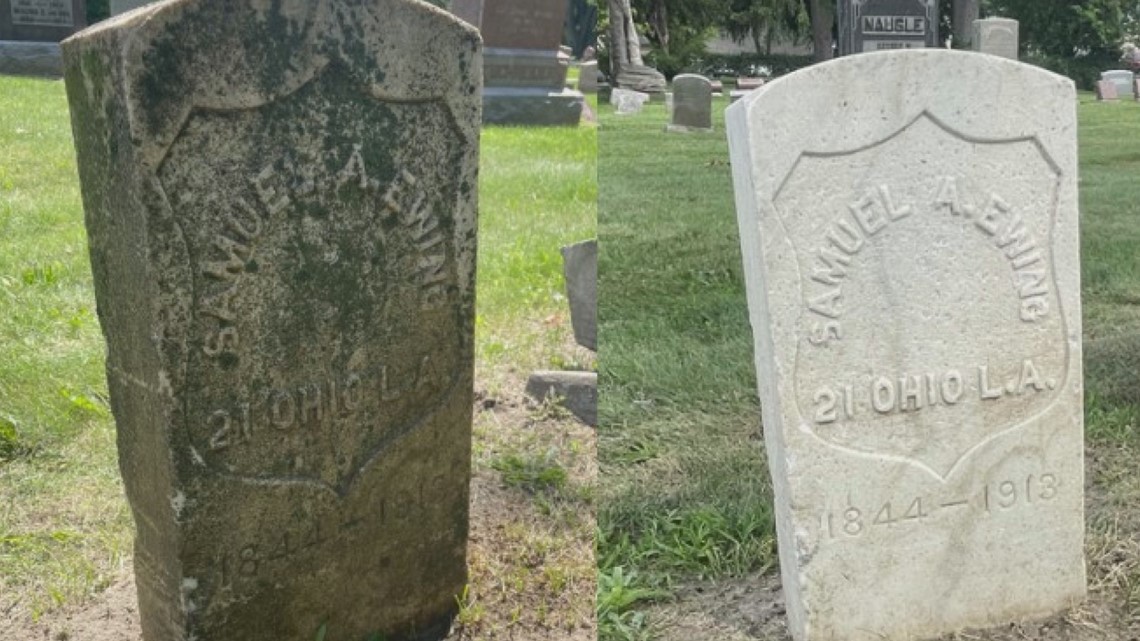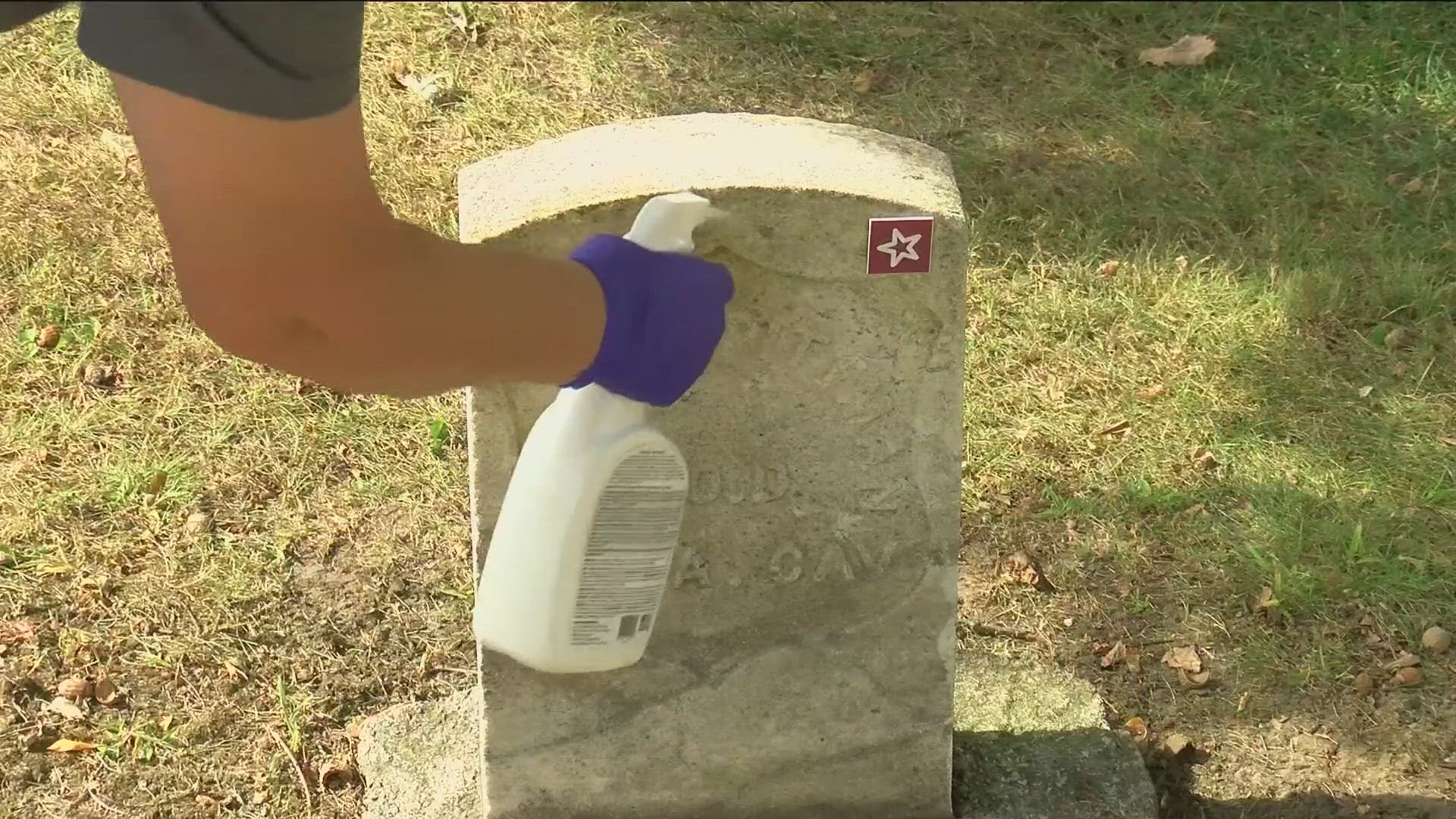OREGON, Ohio — When retired U.S. Navy veteran Jim Phillips asked his wife, Sue, why no one was cleaning or maintaining military grave markers, she asked him, "Why don't you?"
Taking those words of encouragement to heart, Jim founded "Remember Veteran Grave Markers Incorporated," a non-profit organization dedicated to cleaning and restoring the headstones of those who served in the U.S. military. He said his goal is to give proper recognition to fallen veterans and encourage others to help keep graves in good shape.
On Wednesday, WTOL 11 met with Jim and Sue at Willow Cemetery in Oregon while they worked to clean a set of veteran grave markers.
"It's one thing about putting a wreath on there. It's another thing about putting a flag on there," he said. "What about giving more of a perpetual 'Thank you' by making sure the graves are clean that need to be cleaned? Not every grave needs to be cleaned that's a veterans grave, but the ones that I tended to [at Willow Cemetery]? They need attention."
Jim and Sue have been cleaning grave markers across Lucas County for three months, but they don't clean just any marker. Private headstones and markers are the responsibility of living family, while government-issued headstones - which Jim and Sue can recognize easily - are what they work to maintain and clean.
Government headstones have changed over the years. Jim demonstrated with a marked rope how the width of the headstone - which is usually made of marble or granite - indicates how old it is. Their focus Wednesday was a set of headstones belonging to veterans who died in the early 1900s. Headstones older than that often only contain dates of death, meaning information on the fallen is sometimes scant.
Over time, many of the headstones deteriorate and erode without someone to maintain them. Sometimes, family members and descendants live too far away; others may not have any descendants at all. To commemorate those who served in the U.S. military, Jim and Sue have made it their mission to clean these markers, one at a time.
"It's important to remember," Sue said.
The process to clean a grave marker is not difficult, but it does require a careful, caring hand and a few tools. One of the worst culprits of grave marker deterioration is lichen, a composite organism that arises from algae or cyanobacteria. It's sometimes seen on tree bark or boulders, but congregates on manmade structures - such as headstones - as well.
Jim and Sue begin the process of cleaning a lichen-covered headstone by pouring water over the stone, then scraping and brushing away at the material. It is important to use a brush that does not contain any metal in the bristles, as this could damage and further deface the marker.
Sue demonstrated this process on a headstone that covered in enough lichen that the name and date were completely obscured. As she cleaned it, the outline of letters became visible - but sadly, not enough to read it. However, the size of the marker, Jim said, was 10-inches wide, meaning the veteran died prior to 1902, when the size was upgraded to 12-inches.


Whomever the marker may belong to, Jim explained it may need to be replaced even after extensive cleaning. Cemetery records can help clarify who was laid to rest in that spot and, following a request, the U.S. Department of Veterans Affairs can assist in proving a new marker.
Some headstones can, following a cleaning, look good-as-new. Jim and Sue applied a chemical known as D/2, which breaks down organic matter on surfaces. While D/2 is approved for grave-cleaning use by the National Cemetery Administration, Jim and Sue stressed you should always ask cemetery staff for permission prior to using it.
The use of D/2 takes several months, but the results are noticeable. Below is a before-and-after photo of a veteran grave marker following use of D/2.


Jim said he hopes efforts to clean grave markers will encourage others in the area to do the same.
"If I can focus on this and let people recognize how things are being attended to, it's like cleaning up a neighborhood," he said. "You clean up one house, the other neighbors are going 'I gotta clean up my house too because the neighborhoods getting all cleaned up."
To learn more about the project or to contact Jim and Sue, click here to see their Facebook page.
MORE FROM WTOL 11

